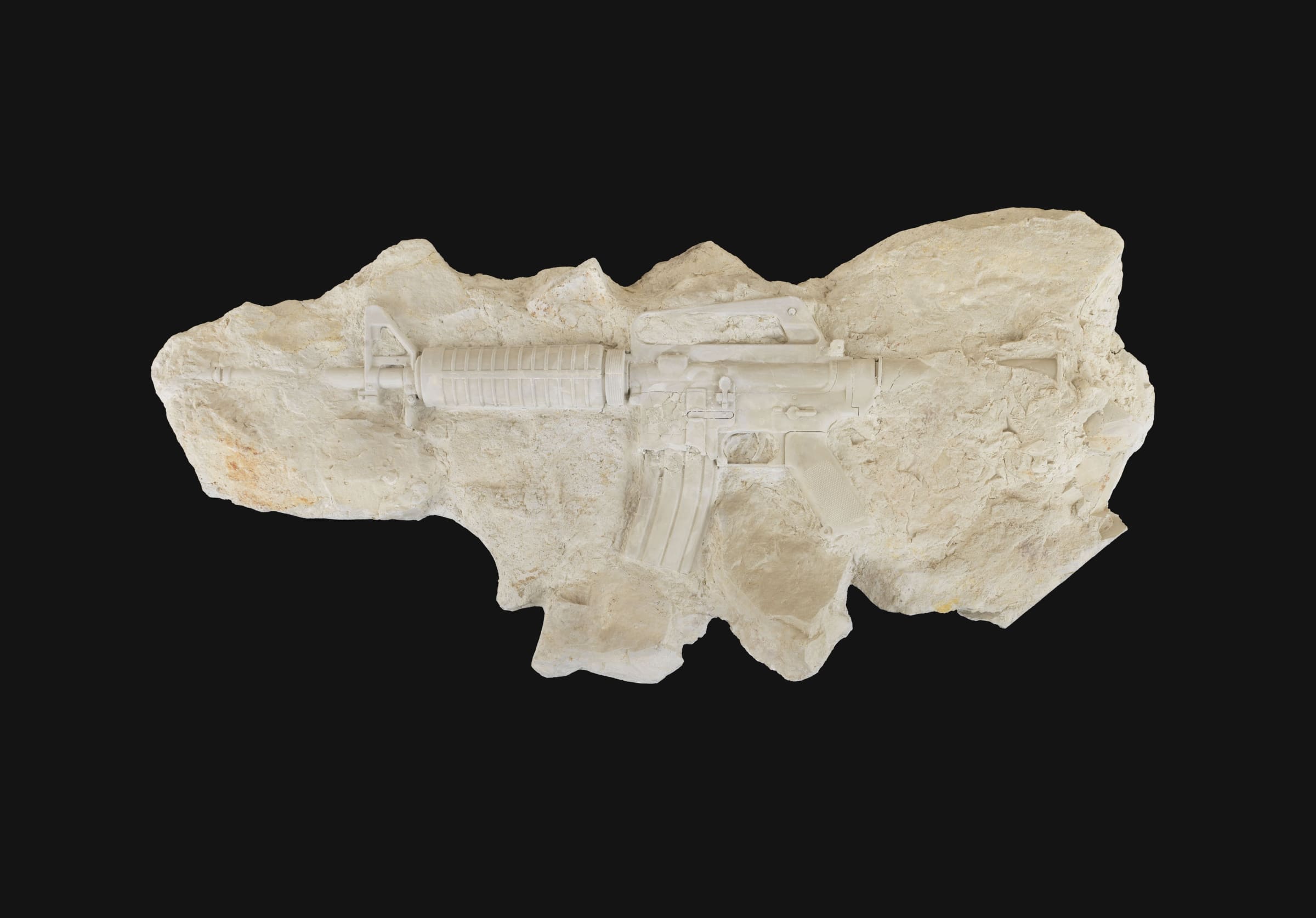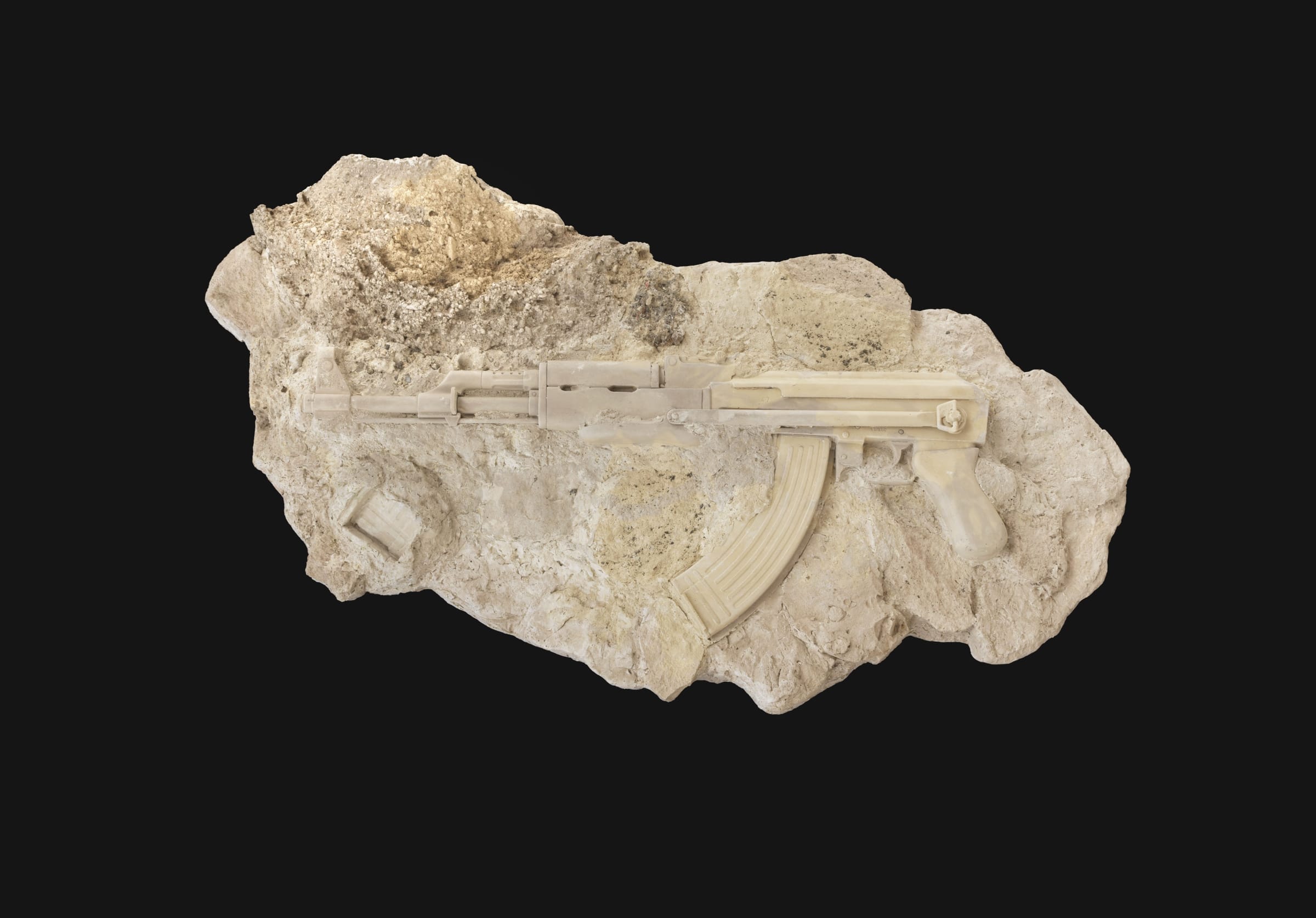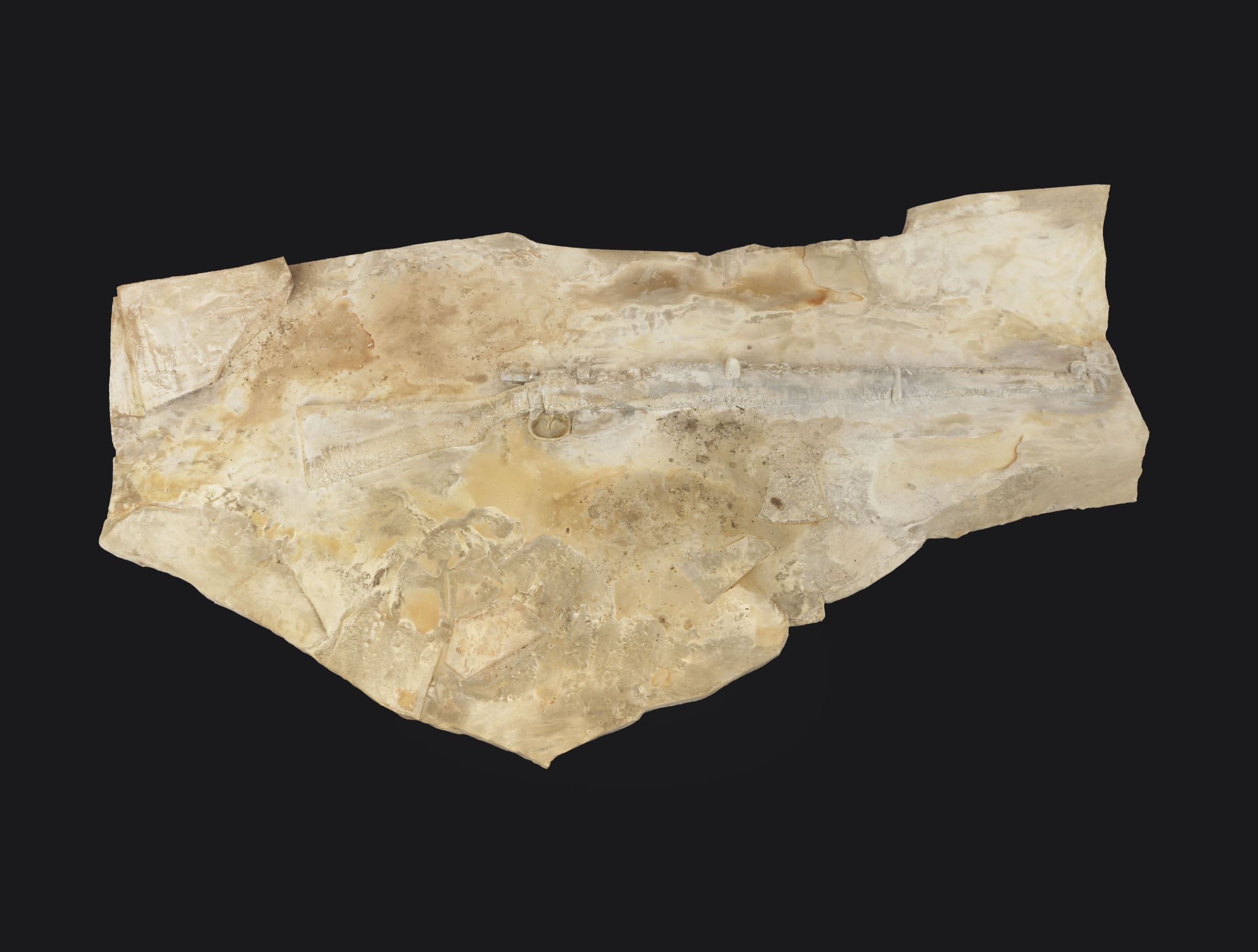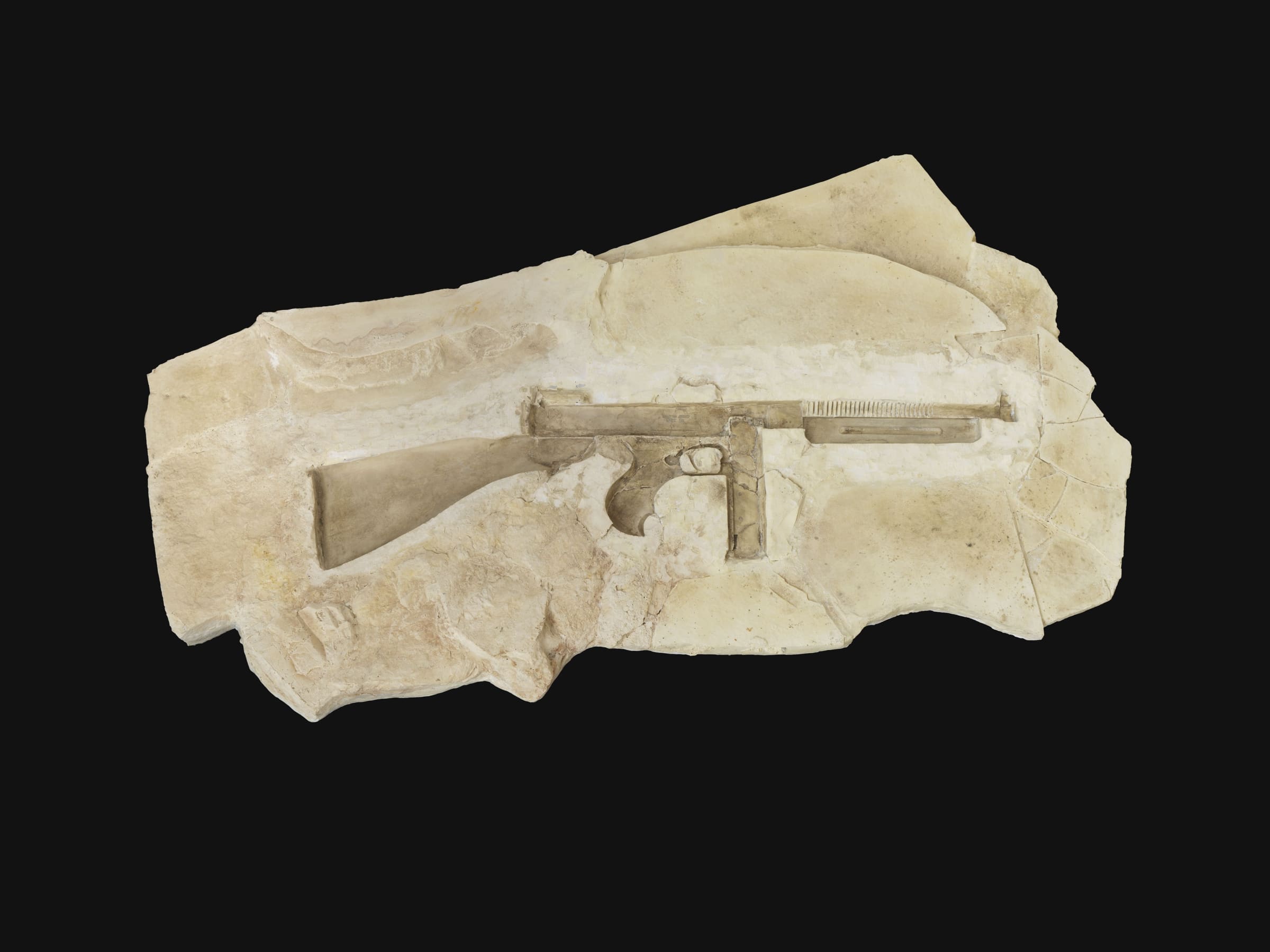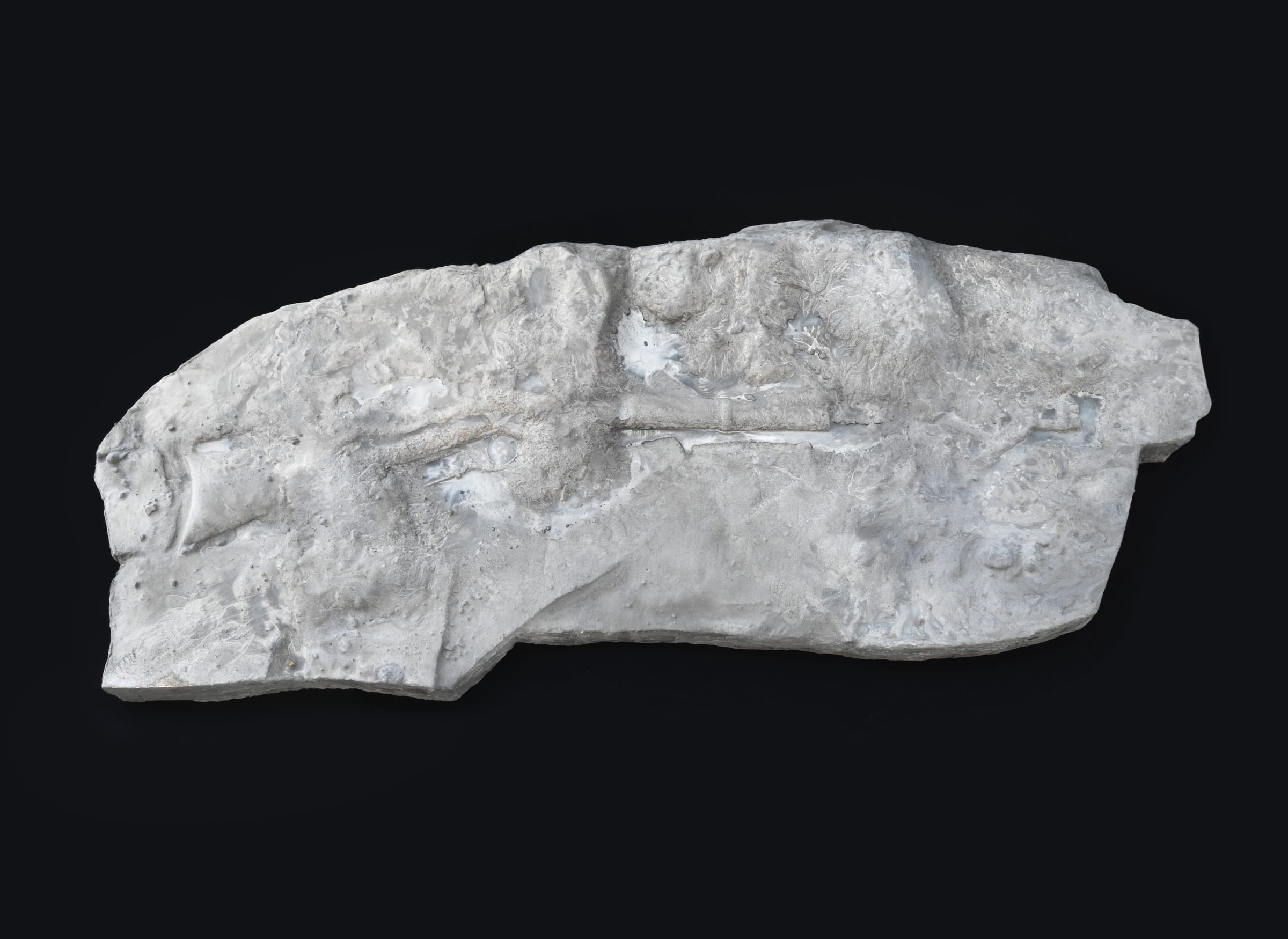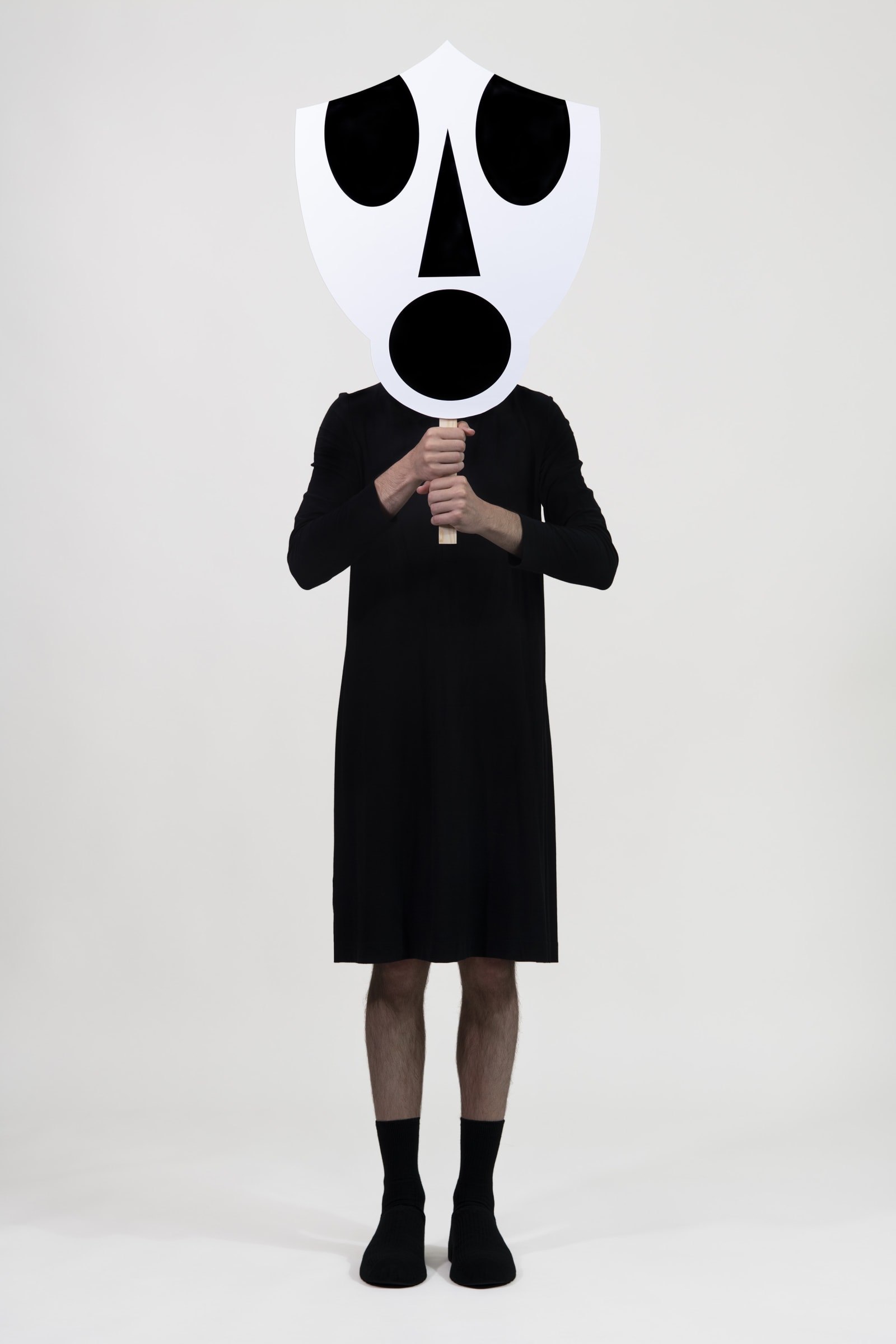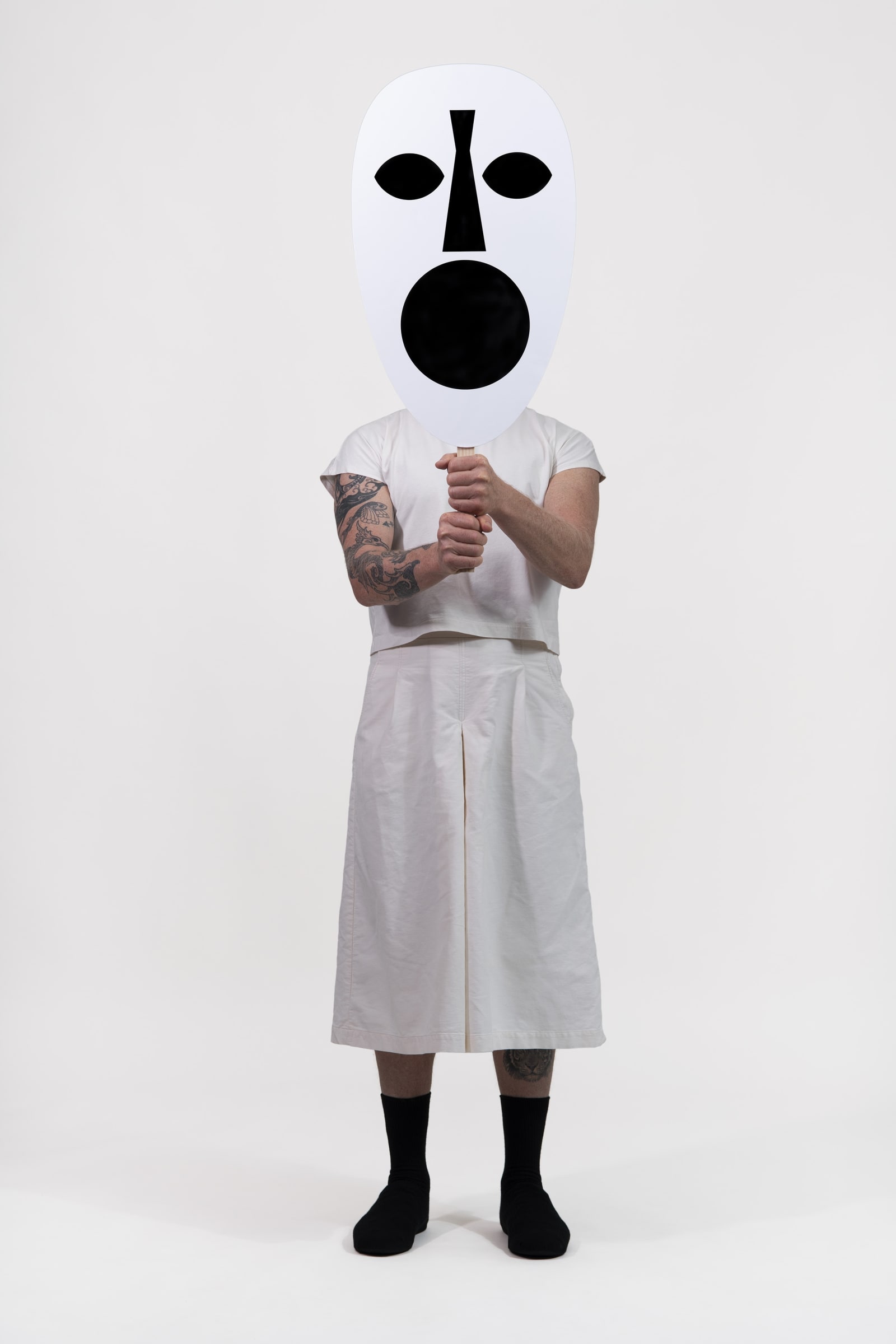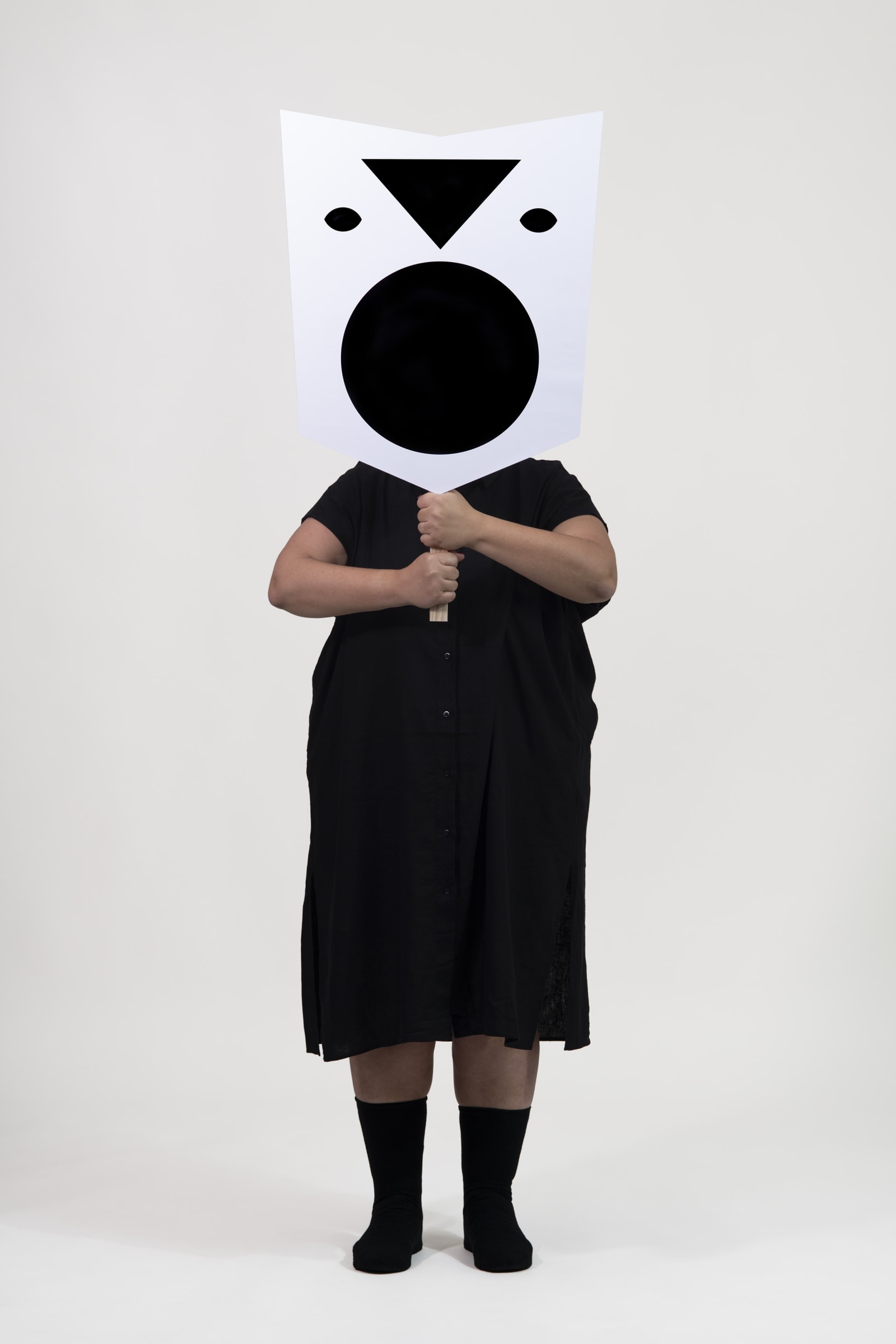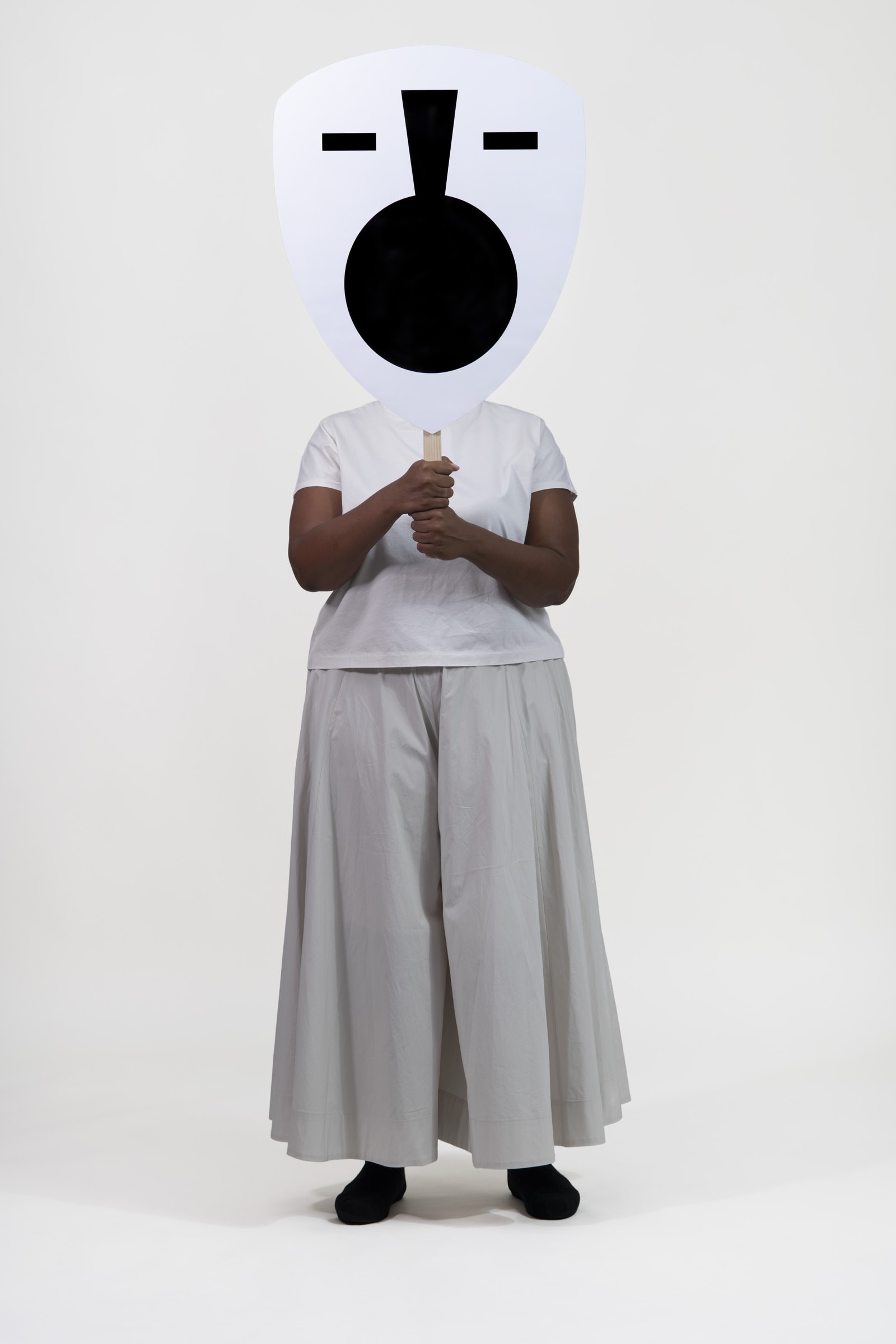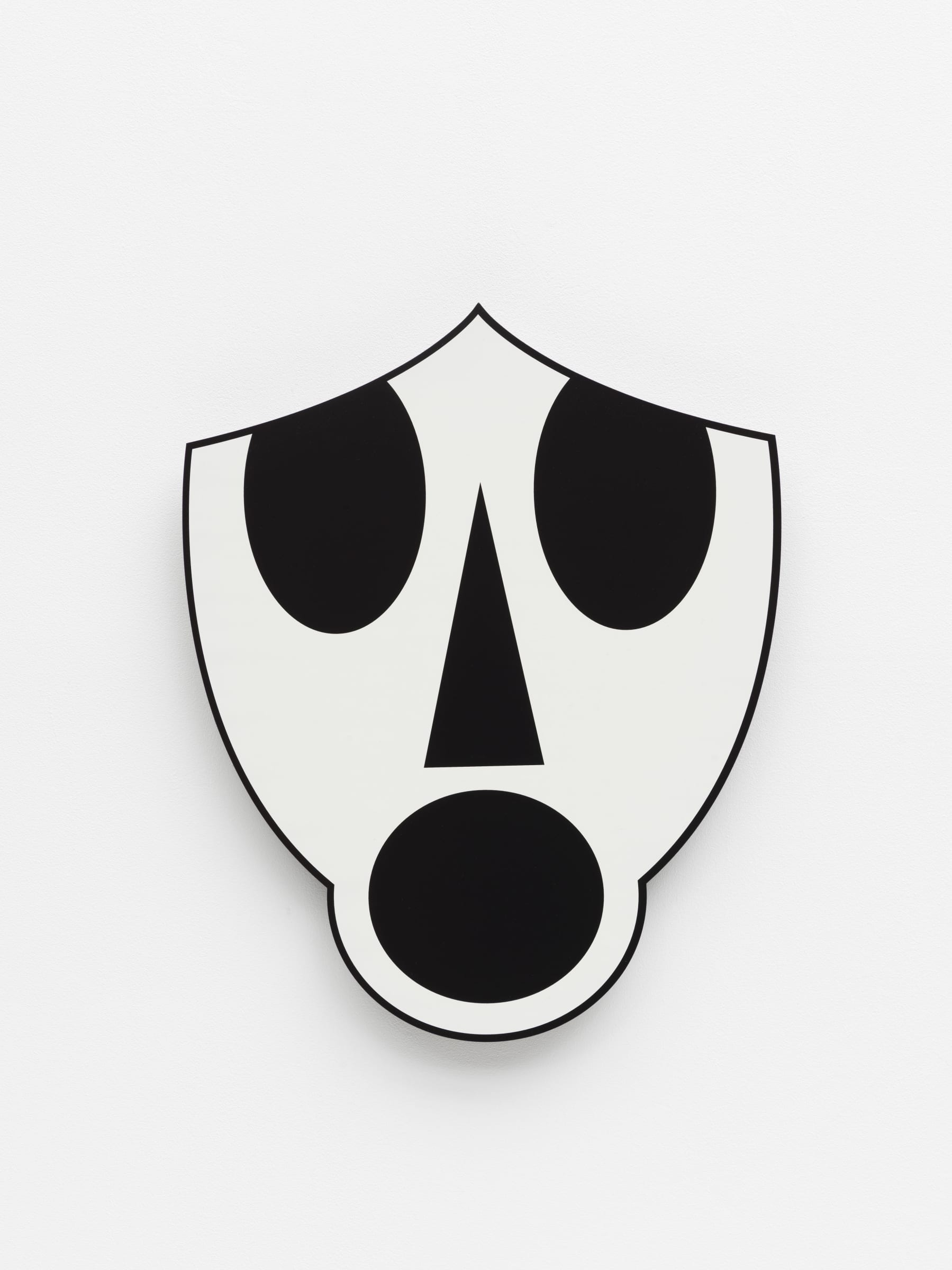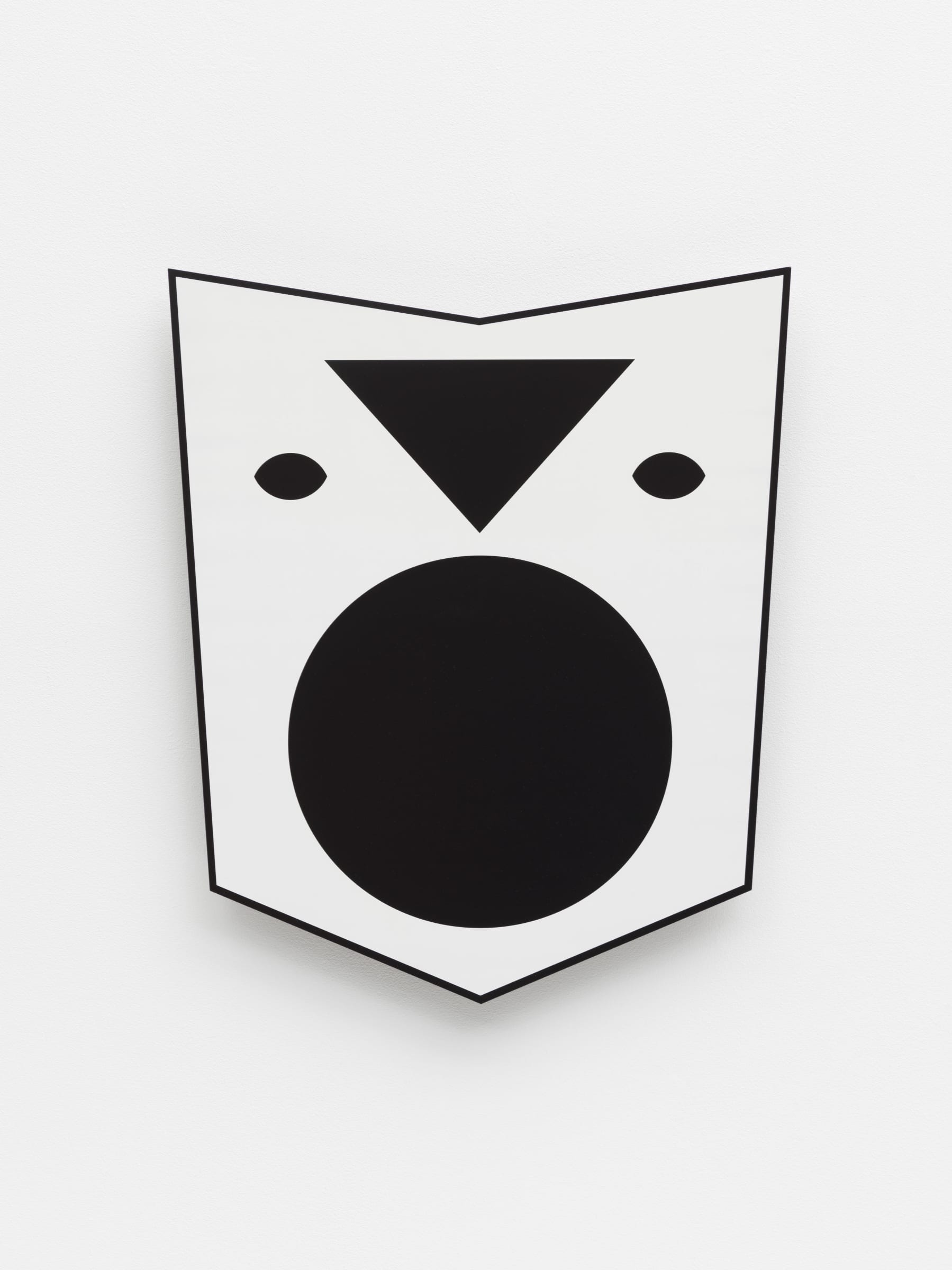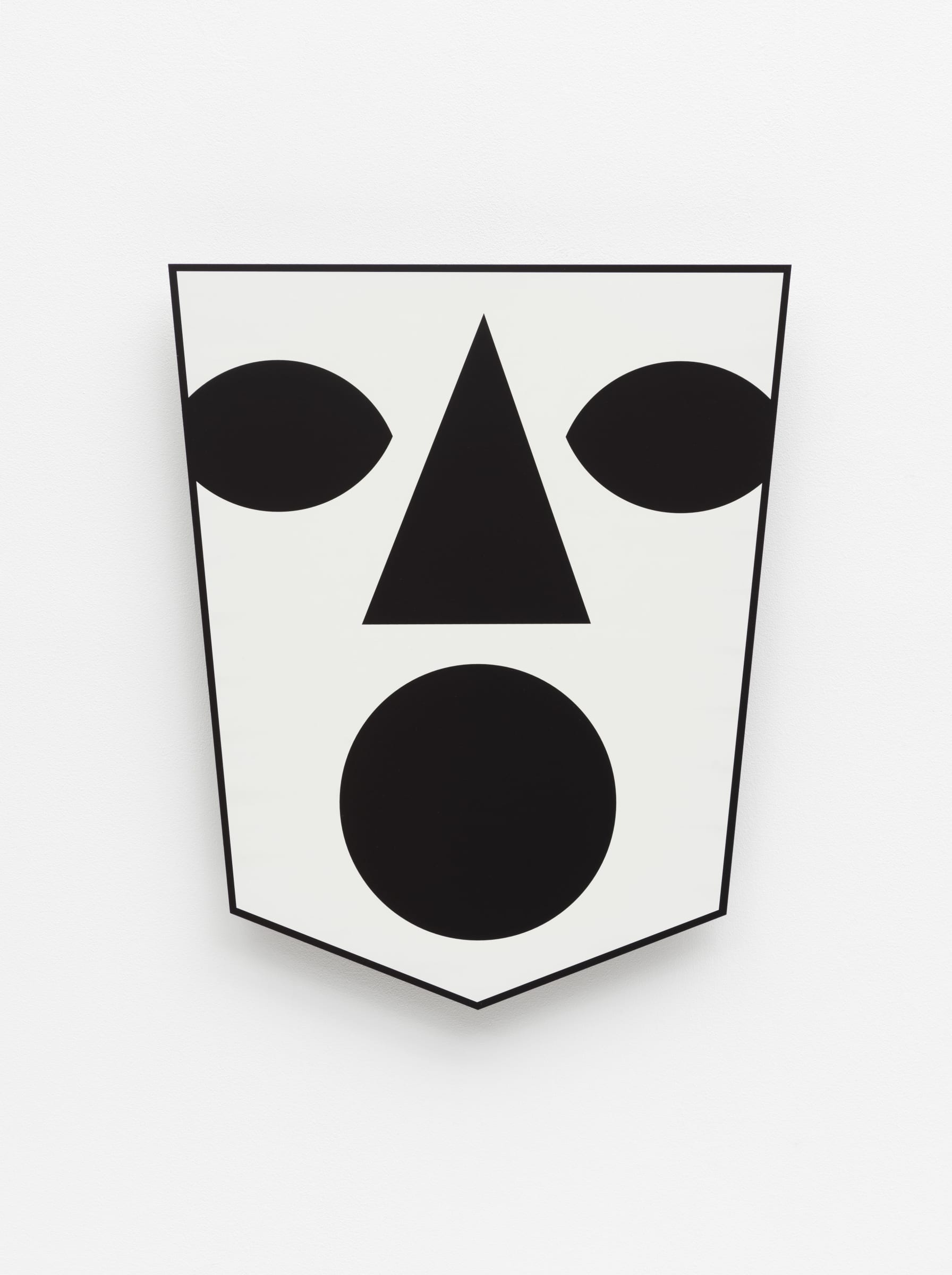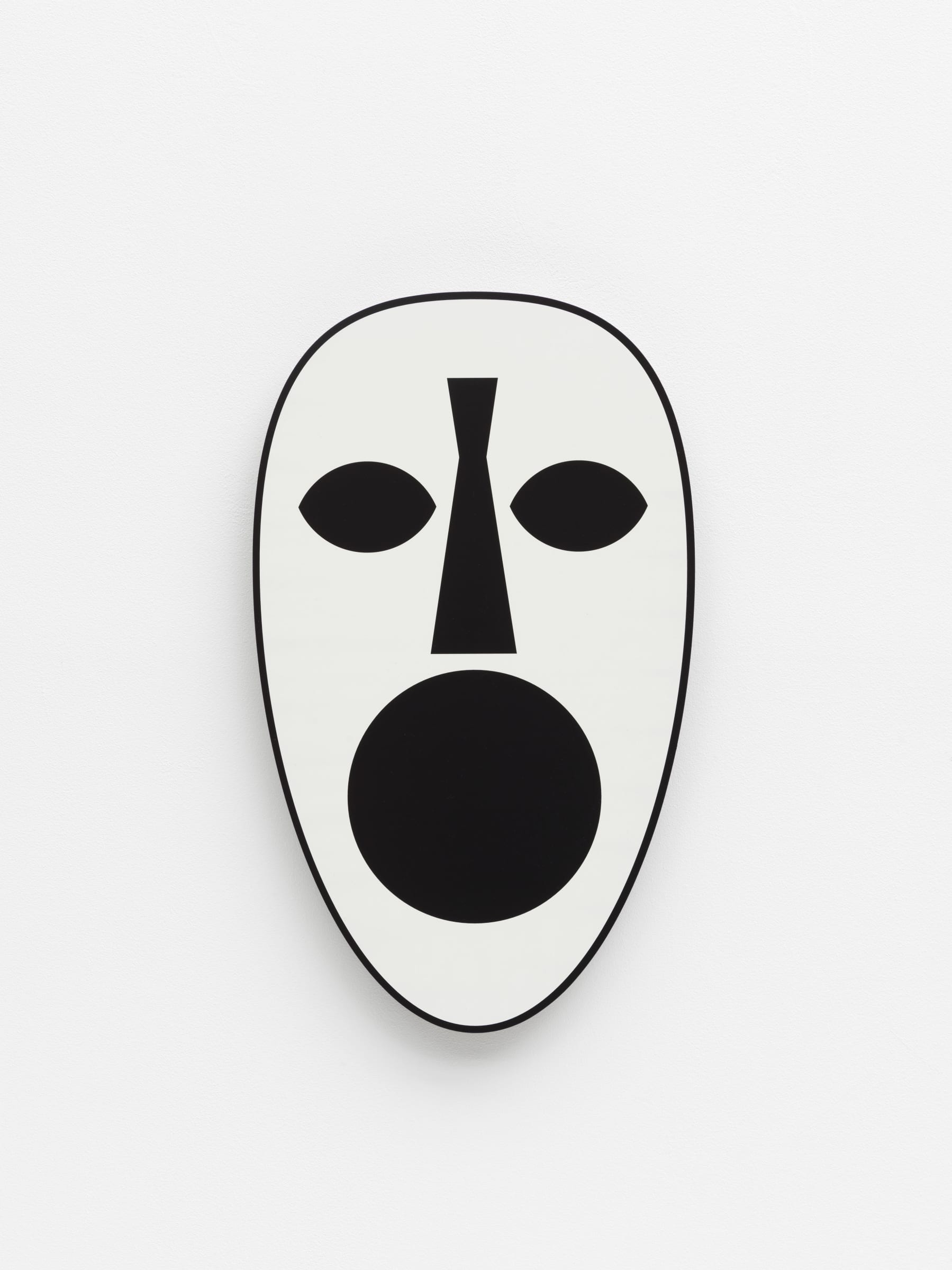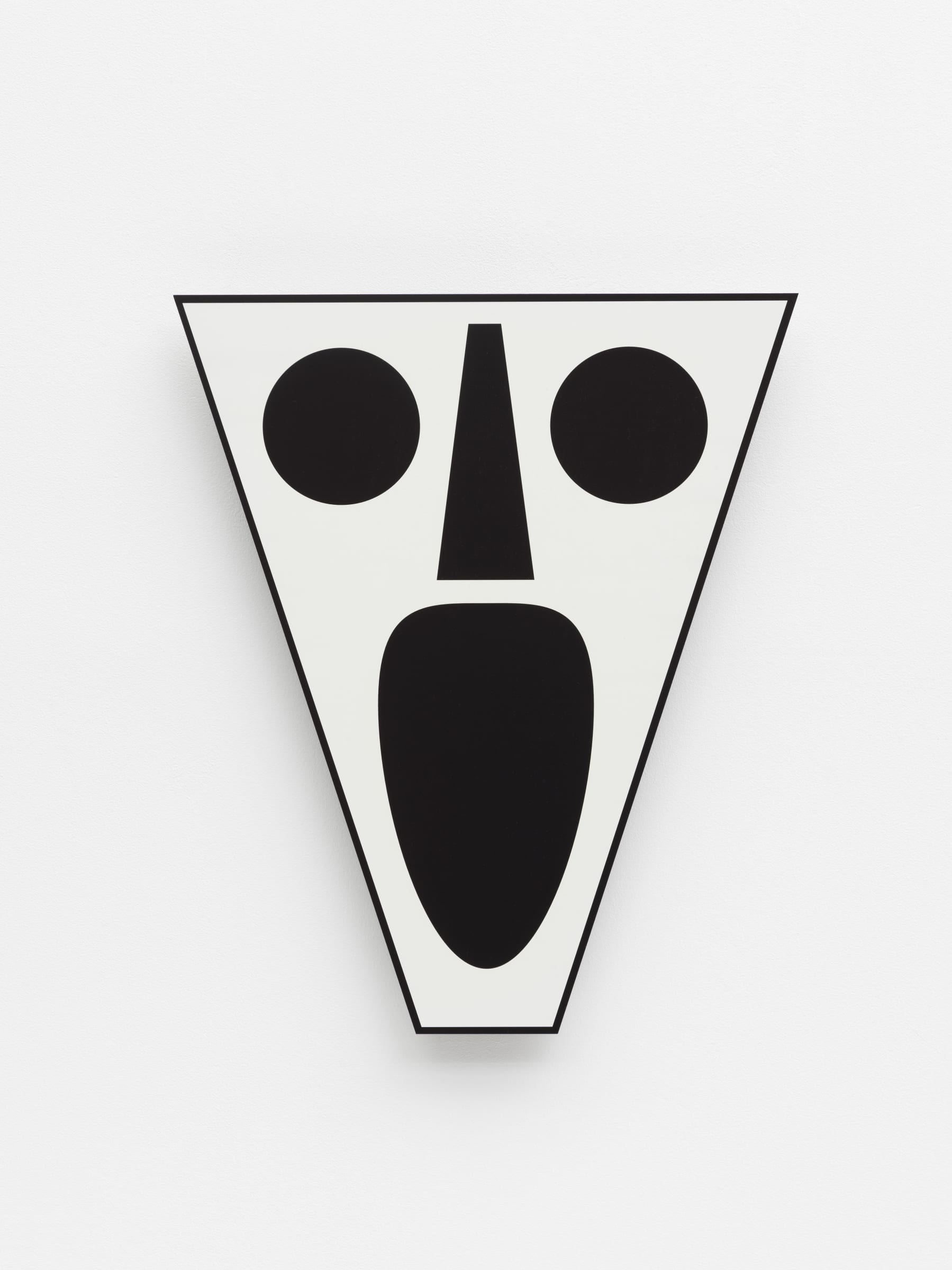Yael Bartana: The Graveyard
Taking her performances What If Women Ruled the World (2017-2018) and Bury Our Weapons, Not Our Bodies! (2018) as points of departure, Yael Bartana’s second solo exhibition at Capitain Petzel features her latest film together with a group of prints and objects. The show marks the Berlin debut of The Undertaker, in which Bartana staged and filmed a public collective funeral of weapons in Philadelphia, the birthplace of American democracy.
The Undertaker follows an obscure figure as she leads her swarm of armed followers in a ceremonial march on the way to perform a mass burial ritual. Carrying a variety of weapons from different times, the choreographed group strides through numerous historical locations in the city center of Philadelphia, eventually being guided by their leader to the burial site in Laurel Hill cemetery in which they dispose of the weapons. Rather than a memorial to the dead, the group creates a human monument for the living, linked up with ghosts of the past. The performance is based on a choreography by the Israeli movement-composer Noa Eshkol (1924-2007) from 1953.
The Graveyard represents a crucial stage in the succession of Bartana’s recent works. Recurring elements within projects lend an ongoing nature to her practice, making her an artist creating movements rather than mere individual artworks. In What If Women Ruled the World, Bartana imagines a hypothetical union of female governors and experts (defence advisers, soldiers, peace activists, humanitarians, politicians and leading thinkers) on a mission to avert impending disaster. In The Undertaker, the president of this fictional government appears again to lead the armed followers. Likewise, the claim “Bury Our Weapons! Not Our Bodies!” is an outcome of What If Women Ruled the World and lays the foundations for Bartana’s Philadelphia performance as well as her show at Capitain Petzel.
For this exhibition the artist has simulated a series of fossilized weapons which are presented on pedestals in the ground floor of the gallery, accompanied by a display of prints illustrating masked figures — the undertakers. Her figures rendered in a large format hold up their masks and operate as an observing choir, witnessing and silently commenting the state of events. A selection of the individual masks is exhibited on the balcony. Addressing notions of militarism, nationhood, belonging, and memory, The Graveyard blurs the lines between fact and fiction and calls attention to the function of weapons in the perpetuation of our systems of violence, repression, and displacement.
On the occasion of the Berlin Art Week gallery openings, a performance based Noa Eshkol’s War Dances will take place in the exhibition space.
Yael Bartana (born Israel, 1970, lives and works in Amsterdam and Berlin) deals with the impact of war, collective rituals and national myths throughout her artistic practice. In 2011 she represented Poland in the Venice Biennale with the trilogy And Europe Will Be Stunned, depicting a fictional movement calling for the return of 3.3 million Jews to Poland. In recent years Bartana has been experimenting with different mediums and expanding her body of work with sculptures, prints and collective performances. Her work has been shown across a number of important institutions, such as the Philadelphia Museum of Art, Philadelphia (2018); the Musée cantonal des Beaux-Arts, Lausanne (2017); the Stedelijk Museum, Amsterdam (2014); and the Louisiana Museum of Modern Art, Humlebæk (2012). In 2020, Yael Bartana will hold a comprehensive solo show at the Jewish Museum Berlin with a new commissioned work for the museum, The Redemption.
Realization of Bury Our Weapons, Not Our Bodies! was made possible through a commission from the Philadelphia Museum of Art with major support from The Pew Center for Arts & Heritage, and additional generous contributions from the Wyncote Foundation, the Philip and Muriel Berman Foundation, Keith L.* and Katherine Sachs, Lyn M. Ross, The Arlin and Neysa Adams Endowment Fund, Maxi D, and Jill and Sheldon Bonovitz.
Ausgehend von ihren Performances What If Women Ruled the World (2017-2018) und Bury Our Weapons, Not Our Bodies! (2018) zeigt Yael Bartana in ihrer zweiten Einzelausstellung bei Capitain Petzel ihren neuesten Film zusammen mit einer Gruppe von Prints und Objekten. Die Ausstellung markiert das Berliner Debüt von The Undertaker, für den Bartana in Philadelphia, dem Geburtsort der amerikanischen Demokratie, eine öffentliche Beerdigung von Waffen inszenierte und filmte.
In The Undertaker (Der Bestatter) folgt Bartana einer obskuren Person, die einen Schwarm bewaffneter Anhänger in einem zeremoniellen Marsch auf dem Weg zu einem Massenbestattungsritual führt. Mit Waffen aus verschiedenen zeitlichen Kontexten versehen, passiert die Gruppe historische Orte im Stadtzentrum von Philadelphia und wird schließlich von ihrer Anführerin zu einer Grabstätte auf dem Friedhof von Laurel Hill geführt, wo sie die Waffen bestatten. Statt einer Würdigung für die Toten erschafft die Gruppe ein menschliches Denkmal für die Lebenden, das die Geister der Vergangenheit beschwört. Die Performance basiert auf einer Choreographie der israelischen Bewegungskomponistin Noa Eshkol (1924-2007) von 1953.
Die Ausstellung The Graveyard markiert einen entscheidenden Punkt in der Abfolge von Bartanas jüngsten Werken. Ihre Praxis ist charakterisiert durch wiederkehrende Elemente innerhalb der Projekte, wodurch sie einen über das einzelne Werk hinausgehenden Zusammenhang schafft. In What If Women Ruled the World stellt sich Bartana eine hypothetische Vereinigung von Regierungschefinnen und Expertinnen (Verteidigungsberaterinnen, Soldatinnen, Friedensaktivistinnen, Humanistinnen, Politikerinnen und Vordenkerinnen) vor, deren Auftrag es ist, drohende Katastrophen abzuwenden. In The Undertaker führt die Präsidentin dieser fiktiven Regierung erneut die bewaffneten Anhänger an. Auch der Claim Bury Our Weapons, Not Our Bodies! ist bereits ein Element von What If Women Rule the World. Er wird zur Grundlage von Bartanas Philadelphia-Performance sowie der Ausstellung bei Capitain Petzel.
Für die Ausstellung hat die Künstlerin fossilierte Waffen entworfen, die auf Sockeln im Erdgeschoss der Galerie präsentiert werden. Sie werden begleitet von einer Gruppe Prints, die maskierte Personen – die Bestatter – zeigen. Die lebensgroßen Figuren halten ihre Masken hoch und fungieren als Begleitchor, der den Verlauf der Ereignisse bezeugt und stillschweigend kommentiert. Eine Auswahl dieser Masken ist auf dem Balkon ausgestellt. The Graveyard thematisiert Begriffe wie Militarismus, Nationalität, Gruppenzugehörigkeit und Erinnerung und verwischt die Grenzen zwischen Realität und Fiktion dort, wo die Aufmerksamkeit auf die Funktion von Waffen bei der Aufrechterhaltung unserer Systeme von Gewalt, Unterdrückung und Vertreibung gelenkt wird.
Anlässlich der Berlin Art Week findet zur Eröffnung der Ausstellung in der Galerie eine auf Noa Eshkols War Dances basierende Performance statt.
Yael Bartana (geb. 1970 in Israel, lebt und arbeitet in Amsterdam und Berlin) beschäftigt sich in ihrer künstlerischen Praxis mit den Auswirkungen von Krieg, kollektiven Ritualen und nationalen Mythen. Im Jahr 2011 vertrat sie Polen auf der Biennale in Venedig mit der Trilogie And Europe Will Be Stunned, die eine fiktive Bewegung darstellt, welche die Rückkehr von 3,3 Millionen Juden nach Polen fordert. In den vergangenen Jahren hat Bartana mit verschiedenen Medien experimentiert und ihr Werk um Skulpturen, Drucke und kollektive Performances erweitert. Ihre Arbeiten wurden in einer Reihe wichtiger Institutionen gezeigt, darunter das Philadelphia Museum of Art (2018), das Musée cantonal des Beaux-Arts, Lausanne (2017), das Stedelijk Museum, Amsterdam (2014) und das Louisiana Museum of Modern Art, Humlebæk (2012). Im Jahr 2020 wird Yael Bartana im Jüdischen Museum Berlin eine umfassende Einzelausstellung mit einer neuen Auftragsarbeit für das Museum, Die Erlösung, zeigen.
-
 Yael BartanaR.I.P. M16, 2019Pigmented Relief Casting Ceramic PowderObject dimensions: 62 x 118 x 7 cm / 24.4 x 46.5 x 2.8 inches
Yael BartanaR.I.P. M16, 2019Pigmented Relief Casting Ceramic PowderObject dimensions: 62 x 118 x 7 cm / 24.4 x 46.5 x 2.8 inches
Pedestal dimensions:80 x 140 x 80 cm / 31.5 x 55.1 x 31.5 inches -
 Yael BartanaR.I.P. MR-711, 2019Pigmented Relief Casting Ceramic PowderPedestal dimensions:
Yael BartanaR.I.P. MR-711, 2019Pigmented Relief Casting Ceramic PowderPedestal dimensions:
80 x 140 x 80 cm / 31.5 x 55.1 x 31.5 inches
Object dimensions:
46 x 87 x 10 cm / 18.1 x 34.3 x 3.9 inches -
 Yael BartanaR.I.P. UZI, 2019Pigmented Relief Casting Ceramic PowderPedestal dimensions:
Yael BartanaR.I.P. UZI, 2019Pigmented Relief Casting Ceramic PowderPedestal dimensions:
105 x 115 x 80 cm / 41.3 x 45.3 x 31.5 inches
Object dimensions:
76 x 97 x 6 cm / 29.9 x 38.2 x 2.4 inches -
 Yael BartanaR.I.P. AK47, 2019Pigmented Relief Casting Ceramic PowderPedestal dimensions:
Yael BartanaR.I.P. AK47, 2019Pigmented Relief Casting Ceramic PowderPedestal dimensions:
80 x 140 x 80 cm / 31.5 x 55.1 x 31.5 inches
Object dimensions:
46 x 90 x 10 cm / 18.1 x 35.4 x 3.9 inches -
 Yael BartanaR.I.P. Glock, 2019Pigmented Relief Casting Ceramic PowderPedestal dimensions:
Yael BartanaR.I.P. Glock, 2019Pigmented Relief Casting Ceramic PowderPedestal dimensions:
60 x 90 x 80 cm / 23.6 x 35.4 x 31.5 inches
Object dimensions:
32 x 47 x 4 cm / 12.6 x 18.5 x 1.6 inches -
 Yael BartanaR.I.P. Lee Enfield Mark, 2019Pigmented Relief Casting Ceramic PowderPedestal dimensions:
Yael BartanaR.I.P. Lee Enfield Mark, 2019Pigmented Relief Casting Ceramic PowderPedestal dimensions:
100 x 180 x 80 cm / 39.4 x 70.9 x 31.5 inches
Object dimensions:
87 x 149 x 5 cm / 34.3 x 58.7 x 2 inches -
 Yael BartanaR.I.P. Thompson M1, 2019Pigmented Relief Casting Ceramic PowderPedestal dimensions:
Yael BartanaR.I.P. Thompson M1, 2019Pigmented Relief Casting Ceramic PowderPedestal dimensions:
80 x 140 x 80 cm / 31.5 x 55.1 x 31.5 inches
Object dimensions:
64 x 107 x 6 cm / 25.2 x 42.1 x 2.4 inches -
 Yael BartanaR.I.P. Smith & W, 2019Pigmented Relief Casting Ceramic PowderPedestal dimensions:
Yael BartanaR.I.P. Smith & W, 2019Pigmented Relief Casting Ceramic PowderPedestal dimensions:
60 x 90 x 80 cm / 23.6 x 35.4 x 31.5 inches
Object dimensions:
42 x 65 x 10 cm / 16.5 x 25.6 x 3.9 inches -
 Yael BartanaR.I.P. Winchester, 2019Pigmented Relief Casting Ceramic PowderPedestal dimensions:
Yael BartanaR.I.P. Winchester, 2019Pigmented Relief Casting Ceramic PowderPedestal dimensions:
80 x 140 x 80 cm / 31.5 x 55.1 x 31.5 inches
Object dimensions:
59 x 122 x 9 cm / 23.23 x 48.03 x 3.54 inches -
 Yael BartanaR.I.P. Napoleon, 2019Pigmented Relief Casting Ceramic PowderPedestal dimensions:
Yael BartanaR.I.P. Napoleon, 2019Pigmented Relief Casting Ceramic PowderPedestal dimensions:
80 x 140 x 80 cm / 31.5 x 55.1 x 31.5 inches
Object dimensions:
50 x 126 x 9 cm / 19.7 x 49.6 x 3.5 inches -
 Yael BartanaUndertaker 1, 2019Archival pigment print180 x 120 cm
Yael BartanaUndertaker 1, 2019Archival pigment print180 x 120 cm
70.9 x 47.2 inchesEdition of 3 + 2 AP -
 Yael BartanaUndertaker 2, 2019Archival pigment print180 x 120 cm
Yael BartanaUndertaker 2, 2019Archival pigment print180 x 120 cm
70.9 x 47.2 inchesEdition of 3 + 2 AP -
 Yael BartanaUndertaker 7, 2019Archival pigment print180 x 120 cm
Yael BartanaUndertaker 7, 2019Archival pigment print180 x 120 cm
70.9 x 47.2 inchesEdition of 3 + 2 AP -
 Yael BartanaUndertaker 4, 2019Archival pigment print180 x 120 cm
Yael BartanaUndertaker 4, 2019Archival pigment print180 x 120 cm
70.9 x 47.2 inchesEdition of 3 + 2 AP -
 Yael BartanaUndertaker 5, 2019Archival pigment print180 x 120 cm
Yael BartanaUndertaker 5, 2019Archival pigment print180 x 120 cm
70.9 x 47.2 inchesEdition of 3 + 2 AP -
 Yael BartanaUndertaker 3, 2019Archival pigment print180 x 120 cm
Yael BartanaUndertaker 3, 2019Archival pigment print180 x 120 cm
70.9 x 47.2 inchesEdition of 3 + 2 AP -
 Yael BartanaUndertaker 6, 2019Archival pigment print180 x 120 cm
Yael BartanaUndertaker 6, 2019Archival pigment print180 x 120 cm
70.9 x 47.2 inchesEdition of 3 + 2 AP -
 Yael BartanaBury Our Weapons, Not Our Bodies Mask 1, 2019Silkscreen on aluminium63,3 x 51,2 × 3 cm
Yael BartanaBury Our Weapons, Not Our Bodies Mask 1, 2019Silkscreen on aluminium63,3 x 51,2 × 3 cm
24.9 x 20.2 x 1.2 inchesEdition of 3 + 2 AP -
 Yael BartanaBury Our Weapons, Not Our Bodies Mask 3, 2019Silkscreen on aluminium63.3 x 51.2 × 3 cm
Yael BartanaBury Our Weapons, Not Our Bodies Mask 3, 2019Silkscreen on aluminium63.3 x 51.2 × 3 cm
24.9 x 20.2 x 1.2 inchesEdition of 3 + 2 AP -
 Yael BartanaBury Our Weapons, Not Our Bodies Mask 4, 2019Silkscreen on aluminium63,3 x 51,2 × 3 cm
Yael BartanaBury Our Weapons, Not Our Bodies Mask 4, 2019Silkscreen on aluminium63,3 x 51,2 × 3 cm
24.9 x 20.2 x 1.2 inchesEdition of 3 + 2 AP -
 Yael BartanaBury Our Weapons, Not Our Bodies Mask 2, 2018Silkscreen on aluminium63.3 x 51.2 × 3 cm
Yael BartanaBury Our Weapons, Not Our Bodies Mask 2, 2018Silkscreen on aluminium63.3 x 51.2 × 3 cm
24.9 x 20.2 x 1.2 inchesEdition of 3 plus 2 AP -
 Yael BartanaBury Our Weapons, Not Our Bodies Mask 4, 2019Silkscreen on aluminium63,3 x 51,2 × 3 cm
Yael BartanaBury Our Weapons, Not Our Bodies Mask 4, 2019Silkscreen on aluminium63,3 x 51,2 × 3 cm
24.9 x 20.2 x 1.2 inchesEdition of 3 + 2 AP -
 Yael BartanaBury Our Weapons, Not Our Bodies Mask 5, 2018Silkscreen on aluminium63.3 x 51.2 × 3 cm
Yael BartanaBury Our Weapons, Not Our Bodies Mask 5, 2018Silkscreen on aluminium63.3 x 51.2 × 3 cm
24.9 x 20.2 x 1.2 inchesEdition of 3 + 2 AP -
 Yael BartanaBury Our Weapons, Not Our Bodies Mask 6, 2018Silkscreen on aluminium63.3 x 51.2 × 3 cm
Yael BartanaBury Our Weapons, Not Our Bodies Mask 6, 2018Silkscreen on aluminium63.3 x 51.2 × 3 cm
24.9 x 20.2 x 1.2 inchesEdition of 3 + 2 AP


